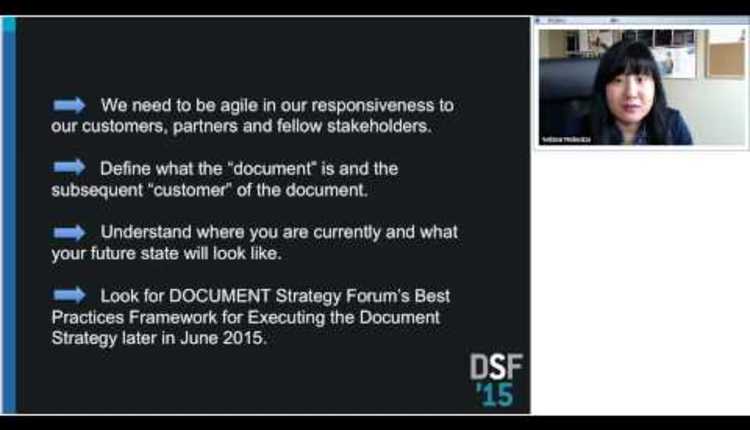Content management systems often are deployed within a single department (such as legal or marketing) and therefore are implemented with a focus on the needs of specific and even isolated audiences. The "E" of ECM may stand for "enterprise," but few installations have that kind of scope, instead providing solutions to only specific, vertically oriented business goals. With transactional enterprise content management (tECM), however, the primary business goal is most certainly enterprise-wide: pushing high volumes of content through the system quickly, efficiently and accurately. In a transactional environment, document management is not a collaborative tool but an infrastructure. It takes "t" to put the "E" back in tECM.
Imaging is the dominant technology in the infrastructural IT approach to transactional management; in fact, tECM is also known as fixed document management, since scanned documents are uneditable. The importance of the tECM system is twofold. First, the image is the source of data for an electronic transaction that ultimately becomes a record in an enterprise system or database, so there is a need to transform the document to data. Second, the image is very often the business record (evidence) of the transaction, so marrying the document of the transaction to the transaction data is key.
Companies are moving toward greater efficiency of document scanning and indexing. Vendors are selected both for their hardware - integration of multiple scanning facilities, document intake speed - and their software - image artifact resolution text extraction and recognition and, most important, routing. Xerox/ACS, Hyland OnBase and IBM/FileNet are major players in this space. Even so, perhaps the most important factor in system selection is throughput (numbers of documents, at which times of day, from which offices or departments, to which repositories, etc.).
Another factor to consider in selecting tECM software is simplicity in the user interface so that operators can easily see the scanned document, validate extracted metadata (values recognized from the scan) and route the documents to the appropriate workflow. Very often, the tECM systems integrate with other enterprise systems in both directions: The tECM system transforms the document to transaction data, and it also serves up images of the documents to the enterprise system. For example, there may be a need to request a view the image of the invoice from the accounting system, so the tECM integration includes that capability.
Routing, the lynchpin to effective tECM, is a confluence of multiple processes. Recognition of business-critical fields from scanned documents requires careful application of business rules and logic and, quite often, manual workflows for keying, double-keying or validation. Dates and dollar amounts, although more easily recognizable than human-readable property names or plain text, have multiple intended meanings; dates alone can refer to authoring, deadline, inception, anniversary, reminder and expiration events, among others. These key data help to assign destinations to individual documents, but better routing demands greater complexity: term disambiguation, identifier parsing, multidimensional case logic, etc. Further, compliance and archiving needs are met by routing documents or document copies into additional repositories, including legacy and specialized systems with their own idiosyncratic metadata requirements.
The most common tECM scenario remains three-way matching in an accounts payable workflow: purchase order, invoice, receipt. After all, money is the lifeblood of industry, and it's fairly easy to calculate ROI here.
However, some companies and institutions recognize the potential of other transaction types. In insurance, for example, complex underwriting and claims practices are interrelated but also highly managed; even small boosts in efficiency from the logical application of taxonomy can have a dramatic effect on the bottom line. In fact, as taxonomists, we've seen how the controlled vocabularies of individual departments and the relationship logic of transactional routing are bridging together into a more truly enterprise-level approach to ECM.
Seth Maislin [sethm@earley.com] is a taxonomy consultant for Earley & Associates, an information management (IM) consulting firm. Mr. Maislin is an industry leader in editorial indexing and search and database keywording.
















